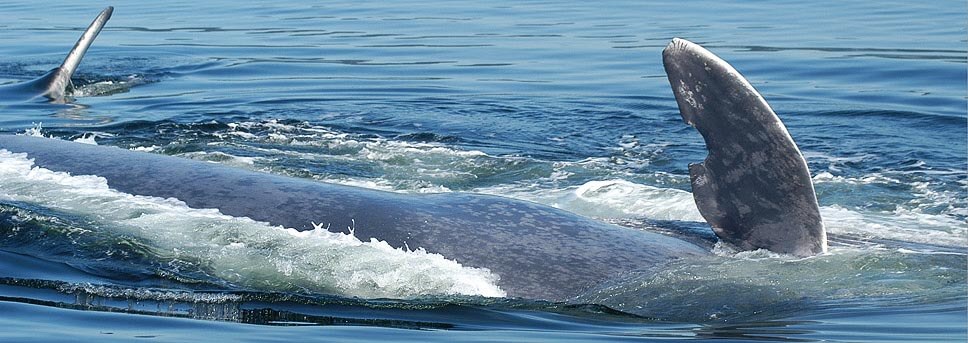Belugas, blue whales, humpbacks, minke whales, three species of seals … the variety of marine mammals seen in the past month keeps growing!
Spouts around Gaspé
In the early morning hours of April 18, four spouts glimmer in the sun off L’Anse-au-Griffon. The observer identifies a blue whale two nautical miles off the coast, two humpbacks three nautical miles away, and another blow too far away to recognize the species.
A fin in the air
Off the coast of Godbout, two blue whales feed on April 12 for several long hours. In fact, they’ve been seen all week long, according to our observers from the region. On April 13, at dawn, an observer was taken aback to see a minke whale a mere sixty metres from shore.
Then, on April 18, near the mouth of the Godbout River, four blue whales approached quite close to the coast, enough to be able to make out their pectoral fins sticking out of the water. Blue whales raise their fins not to greet passers-by walking along the shoreline, but rather to feed. They open their mouth and roll onto their side, revealing their gaping throat, a pectoral fin and sometimes even a lobe of their tail.
A familiar face
A collaborator sends us a picture of a beluga taken on the morning of April 11. Its broad scar makes for an easy ID: Yogi, one of the oldest belugas known to researchers, who was born around 1970. Yogi owes her name to the deep scar in the shape of a bear track on her left peduncle. She also has a deep scar on her right side, in the mid-flank area, and her dorsal crest also shows some markings.
Though she usually maintains a certain distance from her beluga peers, this time, Yogi was seen in the middle of a large herd. Our observer posted at Cap de Bon-Desir reports: “I was able to observe belugas over a very wide strip for over an hour. We’re not talking about a couple dozen animals here, but a hundred or so.”
The same individual also tallies thousands of ducks and other birds. Northern gannets, great blue herons, scoters, brant, common eiders… The diversity was a feast for the eyes.
And, in just an hour of observation, three species of pinnipeds make appearances, namely harp, gray and harbour seals.
Just like people who go out into the streets of their town or village to enjoy the spring sun, marine mammals and birds are returning home to their river.





